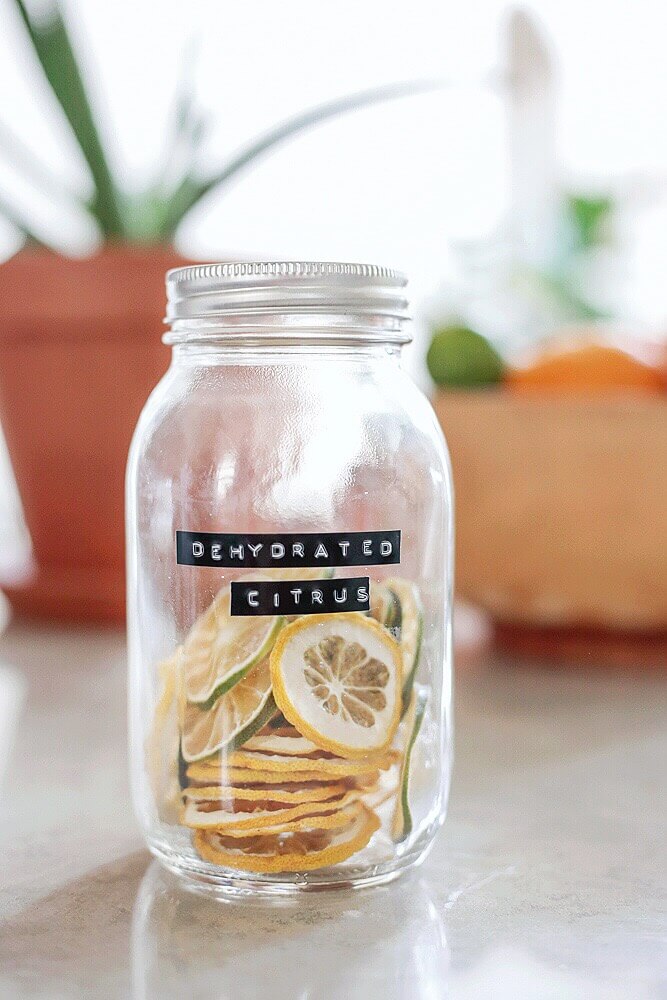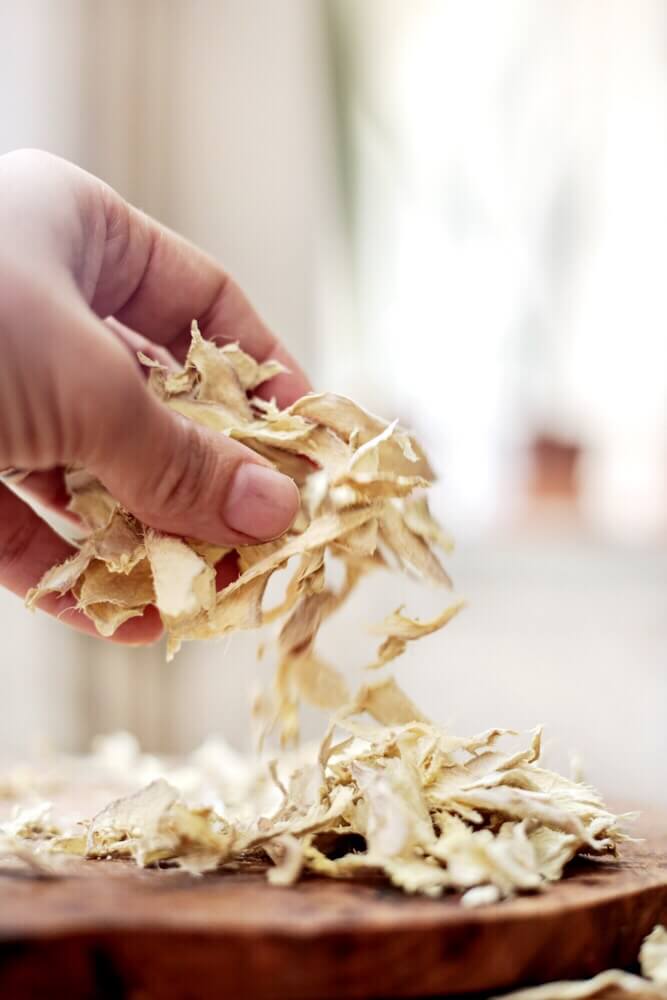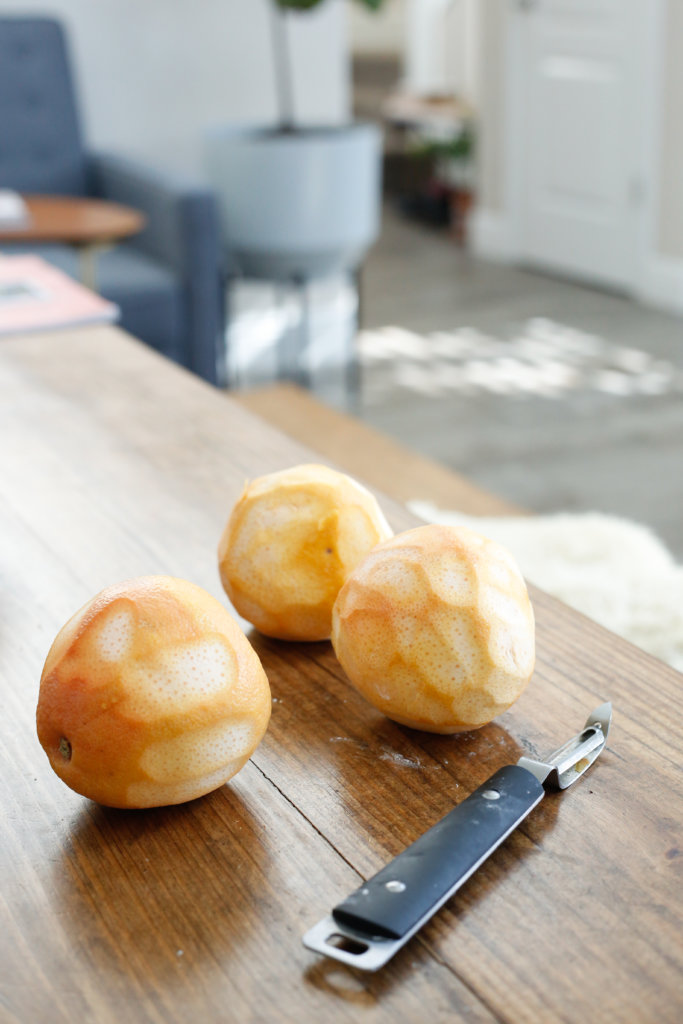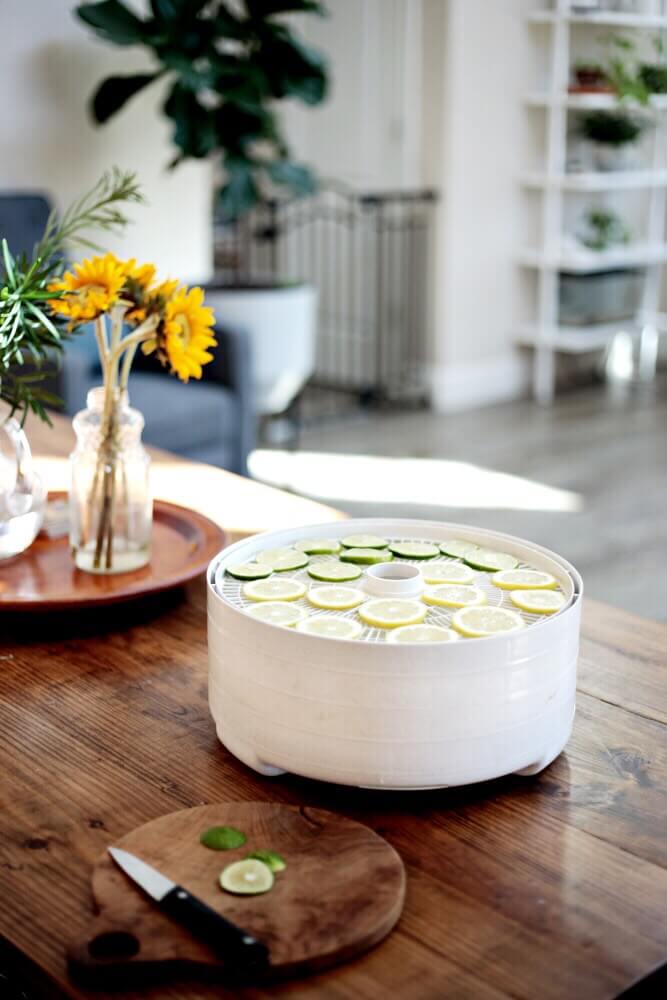
Dehydrating is an incredible way to preserve food, but also to process whole foods so that they can be used in different herbal remedies: tea blends, oil infusions, bath salts, body scrubs, and powdered facial masks. When you dehydrate your own herbs, fruits, and vegetables – it produces far better quality than anything you can buy. And this means that your remedies will be more flavorful, fragrant, hold more medicine and will be more effective.
For example, when you dehydrate ginger at home, the taste is beyond better than store-bought dried ginger. And it’s going to last for months and months in your pantry, ready to brighten your food, ease a stomach upset or soak sore muscle aches away.
Dehydrating at home is truly worth the time and cost investment – and I find it to be an enjoyable activity as well, preparing and stocking the pantry with jars of freshly dried ingredients!
Can I just use my oven to dehydrate
For years I dehydrated different things in the oven, and I had about a 60% success rate. Maybe I get easily distracted! But with the oven, you do have to keep your eye on thigs because it can go from “looks good” to “it’s burning!” in the blink of an eye. You simply can’t get a controlled, low heat setting in most home ovens. So to avoid disappointment I invested in a dehydrator and I’m so happy that I did. It’s by far one of my most used kitchen tools!
What is a food dehydrator?
A dehydrator is a simple design, that uses heated air to evaporate moisture in fresh food. It’s essentially a “box” with a fan inside that continuously blows warm or hot air over the food slowly but surely removing all the water content. Good airflow is important so that the food dries evenly and completely and at a faster rate.
Types of food dehydrators
There are two basic types of dehydrators, vertical & horizontal:
VERTICAL DEHYDRATORS have the fan that is attached to either the base or the lid. This means the air flows up and down. The dehydrator consists of round trays, that stack one on top of the other, which means you can purchase extra trays to expand capacity.
My personal experience with the vertical style: My vertical dehydrator has the fan on the lid, with the air pushing down. This means that the upper racks tend to dehydrate quicker than the lower racks. I sometimes have to rotate the racks, moving the bottom ones up to the top.
With a Vertical dehydrator, you can purchase additional trays – they come in different styles: open racks that allow airflow, mesh racks that hold smaller items like herbs and non-stick sheets where you can dehydrate saucy things, like blended fruit to make fruit roll-ups. What I really wanted, but couldn’t find, was a tall tray that gives height for larger items to fit. I had to modify one of the racks, by hollowing it out so that now it acts as an expander.
- Pros: Inexpensive. You can add more trays if needed.
- Cons: Food does not dehydrate as evenly, although this has never caused an issue.
HORIZONTAL DEHYDRATORS have a fan attached to that back of the machine. This means the air flows from back to front. The machine is essentially a box, with trays that slide in, which means it can only hold a fixed amount of trays. The bigger the machine, the more trays it can fit, and also the more expensive it becomes.
My personal experience with the horizontal style: In m experience, food dehydrated evenly, I sometimes had to rotate trays, because of the food at the front dehydrating a little slower than the back. What I loved was that I could skip a tray and have more room to fit larger items, for example drying large herbs like whole flower heads.
With a horizontal dehydrator, you can purchase non-stick sheets to sit on the tray, which allows you to also make fruit-rollups.
- Pros: Allows the space to dehydrate large things like large flowers, homemade yogurt, and proofing sourdough bread.
- Cons: More expensive and can only fit a fixed amount of trays
What is the best dehydrator to buy?
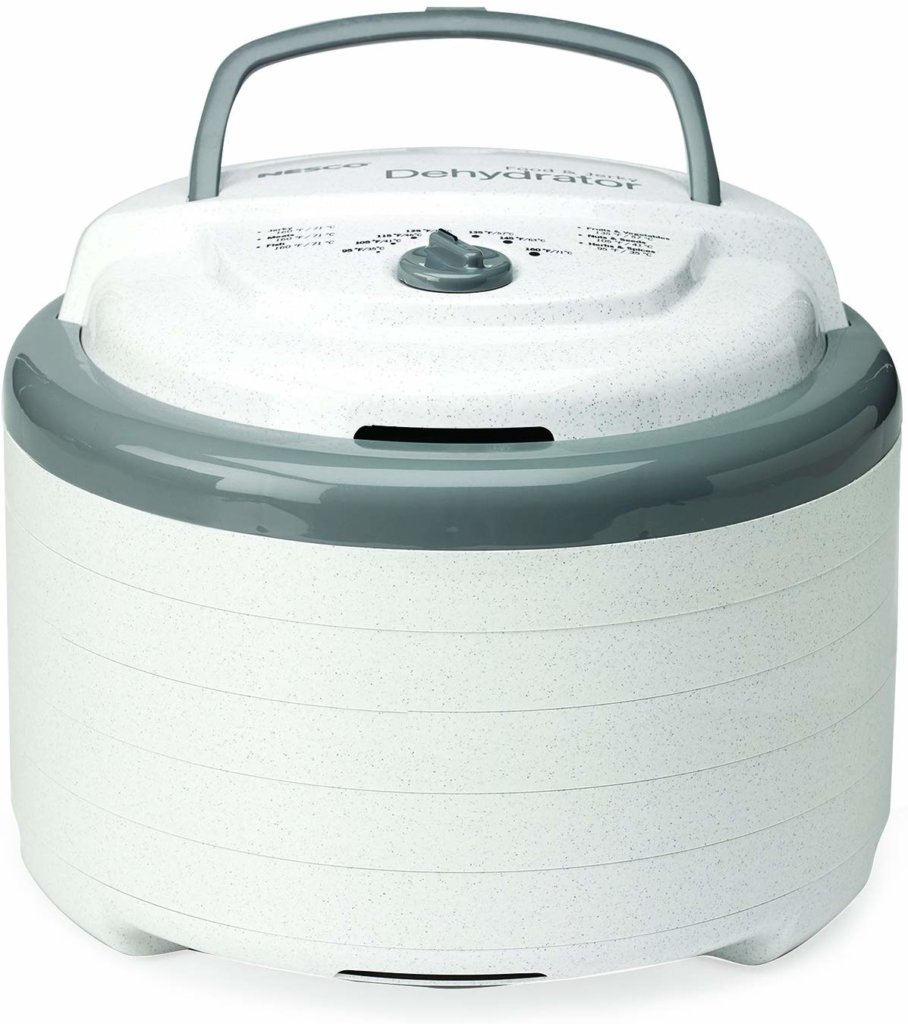
My #1 pick Vertical Dehydrator: NESCO Snackmaster Pro Food Dehydrator
The Nesco is a very simple machine, its inexpensive, works very well and is not too loud (although it’s not completely silent, I do often dehydrate outside so the noise doesn’t bother)
- $58.70 (Amazon)
- 600 watts
- adjustable temperature (95f – 160f)
- Expands up to 12 trays
- Includes (5) trays
- patented feature: air flows down the sides and then across the trays
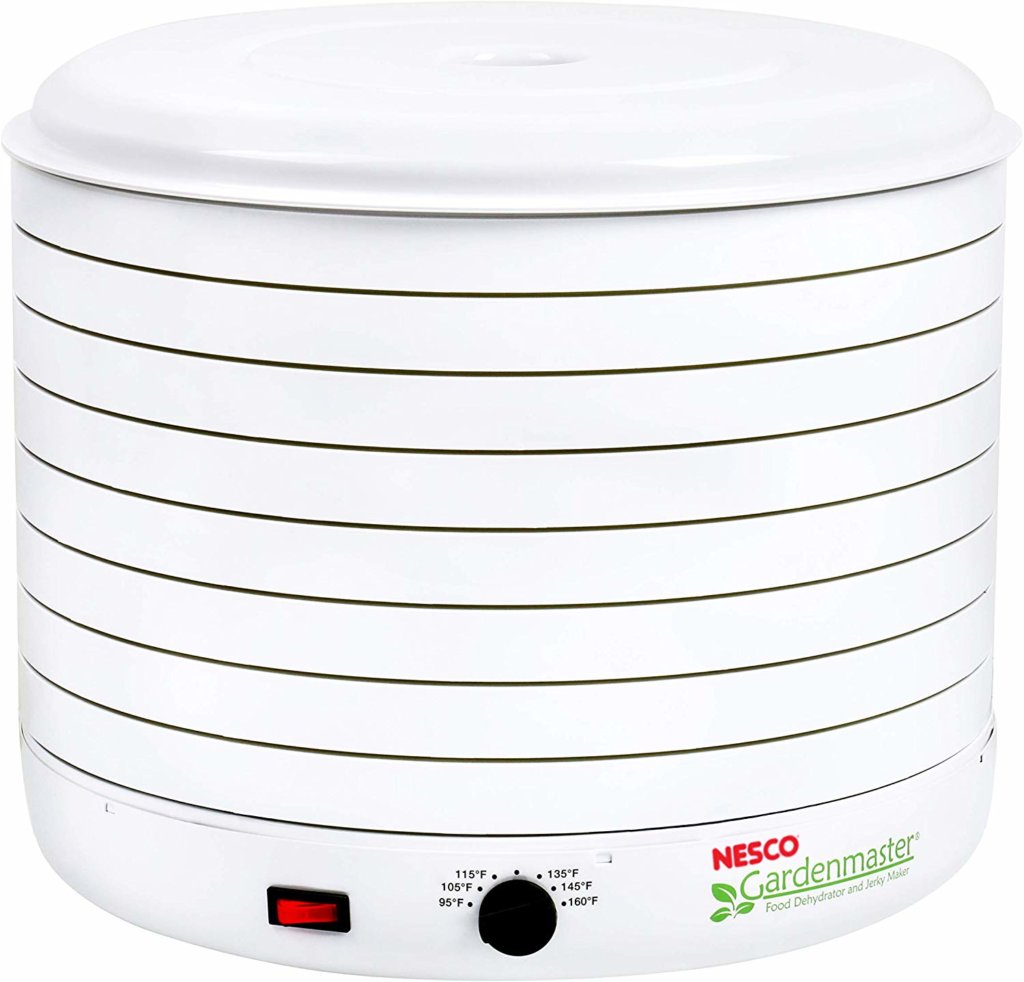
Upgraded pick: NESCO Gardenmaster Food Dehydrator
It’s more powerful & expands more
- $98.71
- 1000 watts
- adjustable temperature (95f – 160f)
- expands up to 30 trays
- Includes (8) Fruit Roll-up Sheets, (8) Clean-a-Screens, (1) Recipe Instruction Book, (1) Original Jerky Spice Pack with Cure.
- patented feature: air flows down the sides and then across the tray
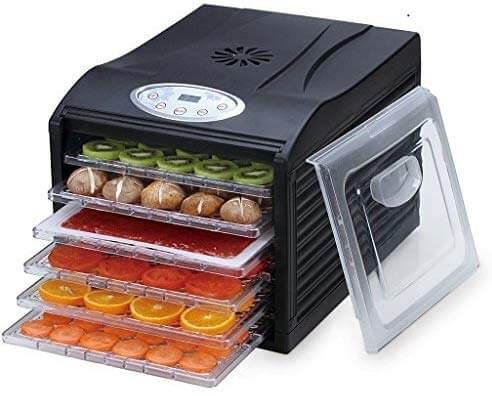
My #1 pick Horizontal Dehydrator: Samson Brands Dehydrator
Samson always receives top reviews, its quiet, dries food evenly and works very well.
- $105.95 (Amazon)
- 400 watts
- adjustable temperature 95f – 158f
- fits 6 trays
- digital control with a shut-off timer
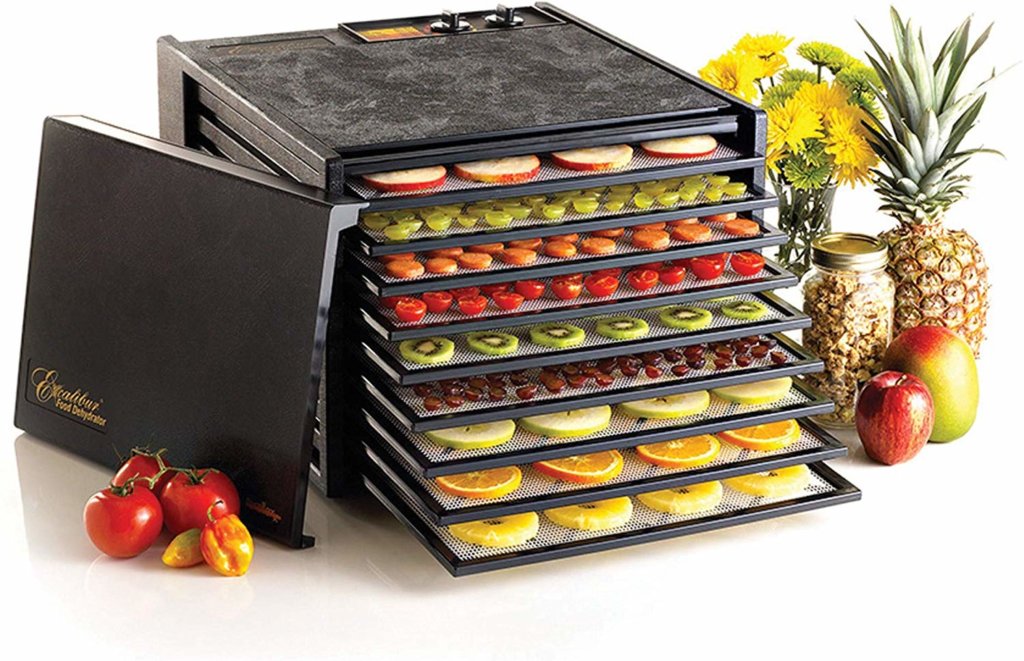
Upgraded pick: Excalibur
It’s more powerful & has more technology
- $294.65 (Amazon)
- 600 watts
- adjustable temperature 105f-165f
- fits 9 trays
- 26-hour timer, automatic shut-off
- trays do not need to be rotated
- patented airflow unique to Excalibur
- Note: I owned the Excalibur. It is top of the line, but at $300, I can’t justify recommending it over the more affordable Samson option.
How do I choose?
More than the bells and whistles and patented air flows… I would say the best way to pick, is to think about how you plan to use your dehydrator:
- Do you prefer the option to dehydrate large quantity: NESCO. Because you can expand the number of trays to hold more things. You can dehydrate a dozen oranges at once!
- Do you prefer the option to dehydrate larger items: Samson. Because you can remove trays to make more space to hold bigger things. You can dehydrate a bowl homemade yogurt!
- Do you prefer the less expensive option: NESCO.
That said, you can look for a second-hand dehydrator – people sell them off all the time! You can save lots of money and build up your food supply.
What Can I Make in a Dehydrator?
Imagine bringing home a bunch of herbs from the market, even growing your own herbs at home and being able to dehydrate them into the most delicious spices and tea blends you’ve ever tried. Or being able to save the veggies in your fridge before going bad – you dehydrate them and store it in the pantry for a quick soup anytime!
The money you save is incredible, but also the quality of your food and any medicinal remedies that you make will be better than ever!
Here are a handful of ideas to inspire you to get started:
- Best Ever Kale Chips
- Orange Peel for tea blends & bath products
- Homemade Ginger Powder
- Lemon Slices for multiple uses
- Homemade Yogurt (you need a horizontal dehydrator)
- Yogurt Drops
- Dried Pepperoni (low carb travel snack)
- Dehydrated Marshmallows
- Dehydrated Cheese
- Sundried Tomato
- Green Bean Chips
- Parmesan Tomato Chips
- Fruit Leather
- Jerky
Conclusion
Dehydrating is a wonderful way to preserve food, stock your pantry and elevate your homemade remedies. What I love about dehydrating, is that it doesn’t alter the flavor of food – like freezing or fermenting. Dehydrating actually amplifies the natural flavors because it removes the water content. I personally use dehydrating techniques to make the food we eat, but also to make herbal tea blends and bath products. If you are interested in living a more sustainable life, and eating deliciously well, I recommend dehydrating!

